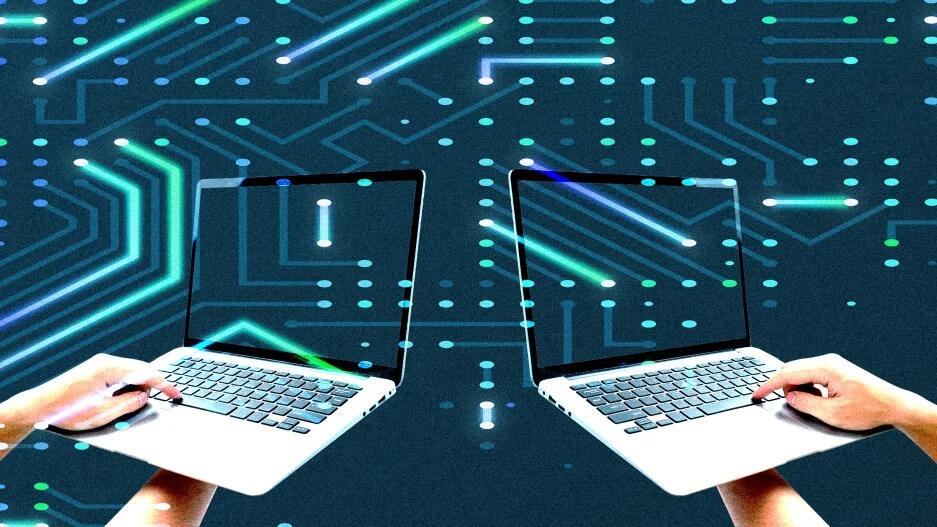- | 9:00 am
What is a digital twin? And why is everyone suddenly building one?
Companies like BMW are developing them, and one day you might have one of your own. Now it’s time to learn what a digital twin actually is.

If you work in the fields of manufacturing, logistics, aviation, or city planning, you’ve probably heard the term “digital twin.” And if you work in healthcare, climate change forecasting, or any of a number of other industries, you’re about to hear it pop up more and more as the decade progresses. In fact, the digital twin market, which was valued at just $11.6 billion in 2022, is expected to be a half-a-trillion-dollar industry by 2032. Companies such as Amazon Web Services, GE, IBM, Microsoft, SAP, and Siemens are already leading the way.
WHAT IS A DIGITAL TWIN?
Simply put, a digital twin is a digital, or virtual, model of a physical thing that exists in the real world, like an airplane or an automotive factory. But rather than just being a pretty and detailed 3D rendering of its physical counterpart, a digital twin can carry out simulations of workflows or events, giving the user a preview of how those scenarios would impact the real-world twin if they happened in physical reality.
Digital twins are largely made possible by Internet of Things (IoT) technology: internet-connected sensors, cameras, scanners, and other smart devices. These devices can detect and transmit massive amounts of real-time data about objects and areas—such as traffic flows, temperatures, or even the vibrations in machinery—and feed that information into a digital twin, allowing a remote user to see how the physical thing is performing in real-time even if they are thousands of miles away from it.
For example, a digital twin of the New York City subway system could show city planners how not just subway traffic would be affected, but pedestrian and automobile traffic, too, if, say, five of the busiest stations flooded. Or a digital twin of a 777 could show Boeing engineers how its plane could fare if forced to fly near a hurricane in an emergency situation.
In other words, a digital twin allows stakeholders to see how an event will impact the real-world twin without actually having to simulate the events in real life, which may not be economically or logistically feasible anyway.
HOW ARE DIGITAL TWINS CURRENTLY USED?
The most common use of digital twinning right now is in manufacturing. BMW and Nvidia recently teamed up to build a digital twin of one of the carmaker’s factories. Using the digital twin, BMW could see how different scenarios would impact the factory as a whole. For example, the carmaker could see how the placement of a large manufacturing robot would have collided with a steel catwalk overhead when the robot’s arms were in motion. Before digital twinning, BMW would have had to physically move the robot and test it out—a process that could have taken days. By using the digital twin of the robot in the digital twin factory, BMW could see the impact in minutes.
But digital twinning isn’t just for factory optimizations. Digital twins are currently used in aerospace design, allowing airplane manufacturers to build more efficient, safe planes thanks to their ability to simulate everything from takeoffs to weather patterns.
Digital twins are even currently used in urban planning, allowing city designers to run any number of scenarios on an entire digital replica of the place millions of people may call home. Using a digital twin of a city, planners can test everything from new street layouts (to see how traffic flows are affected) to new building heights (to see how it might affect the natural lighting in the surrounding area).
And as graphic processors and AI-powered applications that can realistically simulate real-world conditions become ever more powerful and commonplace, digital twinning will almost certainly become more accessible to businesses, researchers, and governments large and small. By the end of the decade, it’s likely you will even be able to create a digital twin of your home so you can virtually rearrange the furniture or redecorate the walls to see how it looks first before actually undertaking any physical, real-world work.
COULD I HAVE A DIGITAL TWIN ONE DAY?
Digital twins of vehicles, factories, and cities already exist, but could there ever be a digital twin of you?
It’s very possible, especially as health technology, biosensors, and AI’s predictive ability improves. It’s easy to envision a day when every person has a digital health twin that mirrors our physical and genetic makeup and lifestyle, a doppelgänger we can feed hypothetical inputs to and see what effects they may have on our bodies.
For example, a digital health twin could show us how adhering to a vegetarian diet would impact our specific body over the next 20 years. Or our digital health twin might be able to reveal the effect that physical stresses on our body will have as we continue to age—what another 10 years of sitting at our desk at work will do to our spine, for example.
A digital twin may even be able to show us which treatment option for a disease is better for us by revealing how our unique body would react if we chose to undertake one treatment plan instead of another, say medication versus surgery. All this sounds far-fetched, but the digital twinning of organs and entire bodies is already well underway in the healthcare industry. It’s just a matter of time before the technology can be applied to each unique individual as well.






































